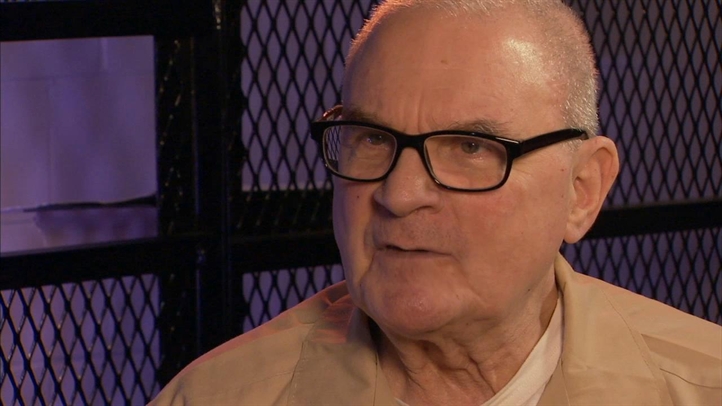With a statewide four-year high school graduation rate of 86 percent, Pennsylvania ranks 15th in the nation.
But the Pennsylvania Department of Education data from the 2012-13 academic year, the latest year available, also show that most of the commonwealth’s urban districts lag well behind that average.
According to PDE, the four-year graduation rate in Philadelphia is 70 percent – a significant increase from 10 years ago when scarcely half graduated. But it's still below the state average and well behind the goal of 80 percent that Mayor Nutter set, for before he leaves office in 2016. (The city, which calculates the graduation rate differently from the state, reported the four-year rate for students who entered high school in 2009 at 64 percent.)
Among the 10 largest urban districts, Harrisburg — which was under state control between 2000 and 2008 — has by far the lowest graduation rate, at 38 percent. Upper Darby, a racially and socioeconomically diverse district on the western edge of Philadelphia, has the highest rate, meeting the state average at 85 percent.
Most of the urban districts had graduation rates between 60 and 80 percent.
Local
Breaking news and the stories that matter to your neighborhood.
Many challenges
Educators and officials in these districts attributed this lag to having a high-needs population, including a growing number of English language learners (ELLs), while lacking sufficient resources to meet the challenges they bring.
According to the state data, on average about 80 percent of students in these 10 urban districts are economically disadvantaged, compared to about a third in the rest of the state. And these districts educate nearly half the ELL students in the Commonwealth — 49 percent.
One challenge brought by concentrated poverty is high student and family mobility, several school officials said.
“Allentown is a high-poverty area,” explained Tina Belardi, that district’s chief academic officer. “A lot of students move around from district to district and it is difficult for us to maintain continuity with our curriculum and pacing for all students.”
Allentown’s graduation rate is 65 percent.
Erie, where the graduation rate is 79 percent, has been coping with an influx of refugees.
“We have one of the largest refugee resettlement areas in the country,” said Matthew Cummings, communications director for the Erie school district. He said there has been an eightfold increase in refugee families living in Erie over the past decade.
After English, “Nepali is the number one spoken language here in the district,” Cummings said. “We need more translation services and people to serve as liaisons between school and home.”
Still, Erie had a graduation rate for ELL students of 76 percent, far better than other cities, including Harrisburg (38 percent), Allentown (52 percent), Reading (61 percent), Pittsburgh (62 percent), and Philadelphia (65 percent).
Kirsten Keys, the Harrisburg district’s director of public relations, said there are two factors driving the city’s low graduation rate.
“We have a transient population. Our students are moving around within the district and to neighboring districts,” said Keys. “Many of our families are homeless and move between cars and motels.”
Plus, she added, “There is very high teacher turnover.”
Some winning strategies
Among the strategies being used by these districts to bolster graduation rates are attempts at redesigning and personalizing the high school experience to make it more relevant and engaging
for students, more intense outreach to students who have dropped out, and modernized career and technical education (CTE) options.
Pittsburgh, the second largest district after Philadelphia, has seen recent increases in its graduation rate, according to Ebony Pugh, its public information officer.
From 2011 to 2013, the graduation rate for all students increased 9 percent to 77 percent, she said, with improvements across all racial groups and for both males and females.
Largely, that is due to a program called the Promise Readiness Corps, which creates a team of teachers and staff and teams them up with a cohort of incoming 9th graders. The meet regularly through the end of sophomore year. The goal is “delivering them to 11th grade promise-ready,” Pugh said.
District data show that African American males experienced the greatest increase, from 56 percent to 71 percent. The rate for African American females went from 69 percent to 78 percent.
These improvements narrowed a gap with white students, especially females. White females in Pittsburgh had a graduation rate of 85 percent and males, 81 percent that year.
In the three high schools with the PRC program, the graduation rate improved by an average of 11 percentage points between 2011 and 2013, according to the data.
Philadelphia created three entirely new small high schools that opened in fall 2014 focused on inquiry-based and project-based learning, real-world internships, and workshops tailored to student interests.
“We need to improve the experience for our students, and by launching these new schools, we are creating more options for [them],” explained Fernando Gallard, the district’s spokesman.
These new high schools do not have admissions requirements, but are designed to appeal to certain neighborhood high school students — those whose academic or behavior records exclude them from one of the city’s selective schools.
Many of these students are coming in to these schools from the juvenile justice system and foster care, Gallard added, “so we need to provide them with different opportunities to feel engaged.”
To bolster graduation rates, many other districts are also expanding alternative high schools and programs targeted to young people who have already dropped out or are at risk for dropping out because they have fallen so far behind academically.
Allentown and Philadelphia have re-engagement centers. Belardi described Allentown’s as “a space for finding support, resources, and job training,” and said administrators are also visiting the homes of students to entice them back to school.
Philadelphia’s re-engagement center helps young people find a fit among several alternative schools or charters with a mission of recapturing dropouts. These programs commonly prioritize personal attention, hands-on academics, job internships, and other supports.
The urban districts are also investing more time and thought into career and technical education. Erie is exposing students to CTE early. Ninety 6th through 8th graders are participating in a manufacturing summer camp at its Central Career and Technical School, where they learn about the jobs available if they graduate with certain certifications and skills.
“The programs reveal to students that school can lead them to outcomes that they want,” said district spokeswoman Cummings – mainly, careers with employment opportunities right after graduation.
Allentown’s Lehigh Career & Technical Institute (LCTI), often cited as a national model, has given students in the region at risk of dropping out the opportunity to job-shadow and complete internships.
Philadelphia is also upgrading and expanding its CTE opportunities. The city has five schools designated as CTE centers, with certifications available in fields ranging from welding and plumbing to various medical specialties and horticulture.
It also has a variety of programs located in neighborhood high schools, but those tend to be undersubscribed, partly because it is difficult to adjust schedules so students can fit in all the required tech and academic classes. Two years ago the district received a $5.7 million grant from the Middleton Foundation to upgrade and expand CTE offerings, and one result of this is the planned opening of an “advanced manufacturing” tech center at Benjamin Franklin High in fall 2015.
The Harrisburg district also has a K-12 Career Pathways program, said Keys, which focuses on getting parents involved in helping students understand their post-high-school options.
Another common tactic for increasing graduation rates is so-called “credit recovery” programs, in which students who fall behind get a second chance to complete coursework, often online, in the summer or on Saturdays.
“We monitor students early on starting in the first quarter of the 9th grade, said Belardi of Allentown, which is doing this for a second year.
Declining funding
These efforts have had various degrees of success, especially since they came at the same time that most of the districts saw their per-student funding decline during the administration of former Gov. Tom Corbett.
“The cuts from the Corbett administration really hurt us,” said Kristin Boyd, spokeswoman for the Reading school district, which has a student poverty rate close to 90 percent. “We had to lay many teachers off.”
But a new principal in the city’s single high school “has brought in more opportunities for students in the form of hip-hop classes and a skateboarding club. This is what has kept our students going.”
Philadelphia has been forced to lay off thousands of employees, mostly teachers, over the past few years. “There has been a decline in investment in public education,” said Gallard, the Philadelphia spokesman. “We’re lobbying for more funds.”
Allentown had a five-year federal grant, averaging $2.6 million a year, dedicated to improving high school graduation rates. Used to fund an array of programs for AP courses to career programs, it is running out this year.
“It is going to be a big challenge to fill this gap,” said district spokeswoman Kimberly Golden Benner. “There are so many unknowns at this point.”
Changes to state funding formula
One of the biggest unknowns for all districts is what will happen regarding state aid, which right now is largely unpredictable and insufficient, although there is movement to change both these things.
The legislative Basic Education Funding Commission came up with a formula that more closely recognizes the special needs of districts and students. It would give each district an added per-student weight for poverty, for acute or “deep” poverty, and for concentrated poverty in a district. It would also give extra weight for each English language learner. Other weights include one to districts with a significant number of charter schools, which would also help many urban areas.
But the Commission’s recommendations still must be approved by the General Assembly. And even if its proposal is enacted — Pennsylvania is one of only three states without a predictable, student-based formula — the state must also increase the total amount of aid. Otherwise, many districts will be unable to reach “adequacy” of resources relative to their needs.
The politically divided state government is gridlocked on the issue. Gov. Wolf, a Democrat, ran on a platform of increasing the state investment in education, and his first budget would increase state aid to districts by about $400 million. Wolf’s plan calls for raising some state taxes while reducing local property taxes to both boost total revenue and shift the burden for paying for schools. But the Republican-dominated legislature has balked.
“We’ll be happy with a formula that positively impacts outcomes for urban, suburban, and rural students of all districts in the state,” said Boyd.



